Exploring the Concept of Incubus in Music and Culture
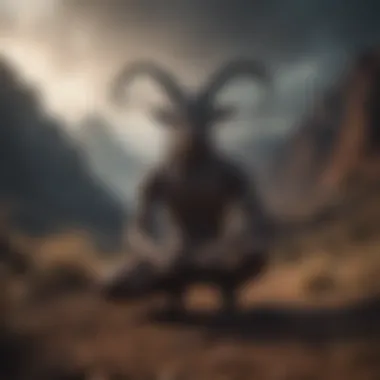

Intro
The term ‘incubus’ is often associated with mystical folklore and haunting tales heard around campfires on chilly nights. But its resonance extends beyond mere myth. In the world of music and culture, the incubus encapsulates a unique archetype, representing desire, seduction, and the darker aspects of dreams. As artists draw upon this rich metaphor, they weave complex narratives that speak to the human experience.
This article unfolds the compelling intersection of the incubus concept and its manifestation across various music genres, scrutinizing how it morphs in meaning and representation in our contemporary landscape. By analyzing historical roots, we can appreciate the contemporary interpretations and implications behind these haunting melodies.
Artist Profile
Biography and Background
To truly understand the impact of the incubus on music, one must look into notable artists who have embraced this theme.
Take, for instance, the renowned vocalist Jim Morrison of The Doors, who often infused his lyrics with themes of seduction and nightmares. Morrison’s life was not just a tapestry of poetic musings; it was steeped in the mystical allure that echoes the incubus lore. He openly flirted with these dark inspirations, providing a provocative lens through which we perceive love, longing, and nightmare.
Major Influences and Inspirations
Jim Morrison drew heavily from Roman and Greek mythology, featuring figures that continuously flirted with the idea of temptation and the supernatural. Other artists, such as Bjork and Nine Inch Nails, also tap into this metaphor, infusing their tracks with raw emotional power that evokes both desire and despair. By examining their works, listeners can better appreciate the profound psychological landscapes they navigate.
- Jim Morrison: Embraced the darker side of desire.
- Bjork: Blends haunting melodies with emotional depth.
- Nine Inch Nails: Explores anguish and longing in aggressive sounds.
Song Analysis
Theme and Lyrics Breakdown
When analyzing songs that incorporate the incubus metaphor, it’s critical to dissect the lyrics carefully. "Lullaby" by The Cure offers a stark portrayal of how love can resemble both a comfort and a threat—with lines that evoke the very spirit of the incubus lurking in the shadows.
Similarly, "Closer" by Nine Inch Nails dives into humanity’s raw desires, showcasing the intense connection between passion and pain. The line "You let me violate you" perfectly encapsulates how the incubus symbolizes both an alluring invitation and a terrifying surrender.
Instrumentation and Composition
Instrumentation plays a pivotal role in expressing the incubus theme. For instance, the ethereal synths in Bjork's "All Is Full of Love" create an atmosphere that feels both intimate and distant, embodying the duality of love and possession that the incubus concept represents.
Some artists use unconventional instruments or soundscapes to amplify the unsettling narratives:
- Tuned percussion to create an eerie resonance.
- Heavy bass lines that evoke a sense of foreboding.
- Layered vocal harmonies that feel simultaneously inviting and haunting.
Culmination
The concept of the incubus thrives in the fertile ground of music and culture, where it emerges not only as a subject of fascination but as a profound metaphor for emotional exploration. This analysis reveals the interconnectedness of our desires and the darker corners of our psyche. By bridging ancient mythology with contemporary expression, we see how artists breathe life into these age-old themes, shaping our understanding of intimacy and fear in the modern age.
Preface to the Concept of Incubus
The term "incubus" carries with it a weight that transcends mere definition. It encapsulates a realm of imagery, emotion, and artistic breadth that resonates through history and culture. In this exploration, we lay a groundwork that does not merely skim the surface but digs deep into what the incubus signifies—both in our collective pasts and in contemporary artistic expressions. Understanding this concept is not just an academic exercise; it connects us to the rich tapestry of human experience, weaving together music, myth, and psychological nuances.
Defining Incubus
At its core, an incubus is often portrayed as a male demon who lies upon sleeping individuals, particularly women, to engage involuntarily in sexual acts. However, nuances abound. This idea varies widely, often serving more than just a literal interpretation; it acts as a metaphor for desires—a manifestation of what lurks in the shadows of our psyche. The incubus therefore embodies a duality: a predator yet an irresistible allure, raising fundamental questions about desire and consent, sleep and wakefulness.
Historical Origins
Delving into the historical roots of the incubus sheds light on its transformations through the ages. The term itself is derived from Latin, implying "to lie upon"—a fitting description, as ancient cultures often invoked these figures as explanations for nocturnal experiences. In medieval texts, the incubus was often woven into tales of witchcraft, feared for both its sexual possession and its association with dreams. This potent mixture of fear and intrigue has echoed through the centuries, influencing art and literature.
Notably, in ancient Mesopotamian culture, the incubus-like figure known as Lamashtu was thought to prey on the unsuspecting, showcasing a concern for both physical and psychological welfare. Similarly, in medieval Europe, the depiction changed yet again, reflecting a society wrestling with evolving views on lust and morality.

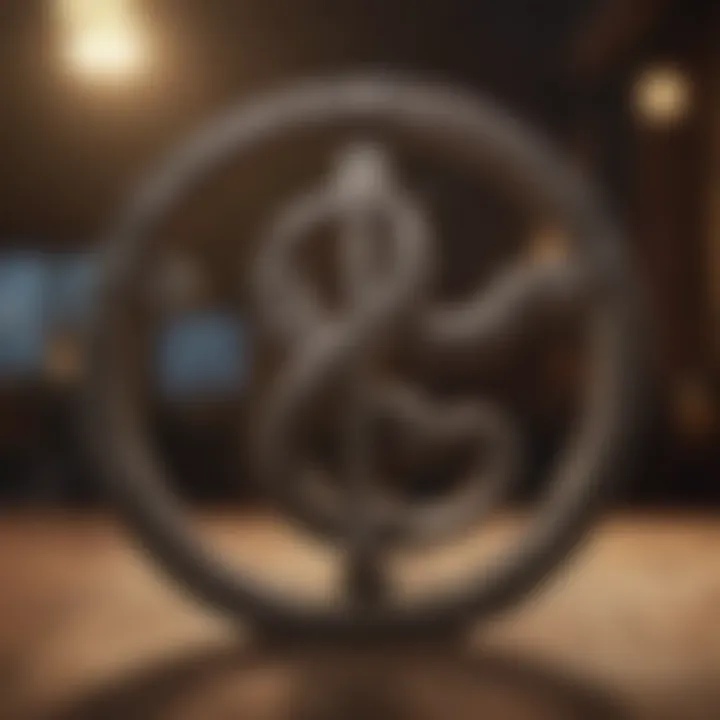
Cultural Interpretations
As societies have progressed, so too have interpretations of the incubus. In some cultures, the incubus is perceived merely as a nightmare or a bad dream. Yet, in others, it represents a tantalizing figure weaving through the realms of seduction and coercion. This cultural variability adds a fascinating layer to our understanding.
In literature, the incubus has appeared in works from Shakespeare to Bram Stoker, each presenting a unique lens through which to view this malevolent figure. Additionally, in music, its symbolism is not lost; it resonates within lyrics and themes, often associated with themes of possession and longing. In today's media, artists extrapolate these ideas, reflecting the ongoing dialogue surrounding personal agency, emotion, and desires—echoing the sentiments of those original tales.
Incorporating these elements enables a fuller grasp of the incubus, grounding its meaning within the broader context of human emotion and artistic expression. Understanding its multifaceted nature enhances our appreciation of its role in various artistic realms, laying the foundation for deeper analysis in subsequent sections of this article.
The Incubus in Mythology
The figure of the incubus has long pervaded various cultures and belief systems, holding a dark but fascinating connotation that intertwines the realms of folklore and reality. The significance of the incubus as both a mythic figure and a narrative device in music speaks volumes about human psychology and societal mores. By delving into the depths of this mythological entity, we unearth layers of meaning that resonate through both ancient tales and present-day storytelling. The incubus, often depicted as a male demon who engages in sexual activity with sleeping women, serves not only as a source of horror but also as a representation of desires, fears, and the complex nature of relationships.
Folklore and Legends
In folklore, the incubus emerges from a range of cultural tales that often carry warnings or moral lessons. For example, medieval texts describe how the incubus preys on vulnerable women, instigating tales that caution against wandering alone or tempting fate. In the context of these legends, the incubus often embodies the fear of loss of control and the supernatural forces that govern human desires. It's a manifestation of primal instincts, a reflection of the anxieties surrounding intimacy and gender dynamics.
A pertinent story can be traced to the Malleus Maleficarum, a famous witch-hunt manual from the 15th century that depicts the incubus as a nightmarish figure. Here, it was not merely a figure of myth but represented societal fears of female sexuality. The tales surrounding the incubus challenge contemporary understanding—are these tales of horror simply about lust, or do they tap deeper into the struggles of power and control?
Incubus vs. Succubus
The distinction between incubus and succubus is critical. While the incubus seeks to seduce women, the succubus—often considered the female counterpart—targets men. This dichotomy reflects age-old gender perceptions and societal norms regarding sexuality. It’s interesting to note how different cultures have portrayed each: in some cases, the succubus is seen as equally dangerous but often wields her charm to ensnare her victims, making the power dynamic skewed.
From a symbolic standpoint, the incubus and succubus can represent fears of desire and vulnerability. They provoke questions about agency and autonomy in sexual expression. The narrative of an incubus, preying upon victims in the dead of night, unmistakably echoes the longstanding cultural fear of male dominance and the violation of personal boundaries.
Symbolism in Different Cultures
The incubus isn't confined to a single narrative or culture; it has spiraled through time and space, taking on different forms and meanings. In some cultures, these figures can be seen as protectors and at other times as punishing entities. For instance, in Arabic folklore, the Qarin, akin to the incubus, serves both as a shadowy figure and a guide—highlighting the duality of human emotion and relationship.
In an entirely different vein, the incubus archetype can sometimes be observed in modern narratives—not just in music but also in literature and film. Contemporary works often lean on the incubus as a metaphor for unattainable desires, sexual repression, or the fears arising from intimate relationships. The symbolic implications stretch far, revealing how the concept has evolved, while still echoing the basic human experiences of fear, longing, and connection.
"The incubus serves as a mirror of our deepest fears and desires, inviting reflection on the complexities of sexuality and human relationships."
The tale of the incubus is more than just another ghost story; it encapsulates the fundamental aspects of human nature while presenting a canvas for exploring deeper cultural narratives. As we dissect these variations and representations, it's clear the incubus remains a compelling vessel for reflection within a cultural and artistic context.
Musical Representations of Incubus
The representation of the incubus in music serves as a reflection of society’s beliefs, fears, and thoughts. It’s a profound exploration of how this mythological figure manifests in auditory art, revealing layers of complexity in themes like desire, loss, and even fear. Every note can evoke strong emotions that resonate deeply, making the concept of the incubus a rich vein to mine in musical circles. Artists utilize the incubus not just as a character or theme but often as a metaphor for the internal struggles of the human psyche.
Genres Intertwined with Incubus Imagery
Rock
Rock music, with its roots steeped in rebellion and raw emotion, has always served as an ideal backdrop for the incubus imagery. The genre's pulsating energy allows artists to channel their darker musings effectively. The key characteristic of rock music is its ability to blend storytelling with powerful instrumentals, a combination that enhances its impact.
In this context, songs often narrate tales of passion or fear associated with the incubus. The unique feature of rock is its expression of angst and exorcism of deep-seated emotions, appealing to listeners seeking catharsis and connection. However, one might argue that the genre can sometimes veer into cliche when handling themes of the incubus, potentially diluting the profundity of the myth.
Metal
Metal, particularly in its heavier subgenres, dives even deeper into the lore of the incubus. The genre thrives on themes of darkness and the macabre, making it a fitting vessel for such influences. A major aspect of metal music is its aggressive soundscapes that convey a sense of impending doom or powerful desires. This aligns directly with incubus narratives, exploring the dualities of attraction and horror.
The unique feature of metal is its theatricality, often incorporating elaborate fantasies within its lyrics, such as tales of seduction from a shadowy figure like an incubus. While metal often offers rich, dramatic representation, it can occasionally be criticized for a lack of emotional nuance, as its heavy sound can overshadow subtle storytelling.
Hip-Hop
Hip-hop, often regarded for its lyrical dexterity and emotional resonance, has begun to embrace themes closely related to the incubus. The specific aspect here is the storytelling tradition where personal and societal struggles are narrated vividly, making it possible to explore deeper themes of desire and personal demons.
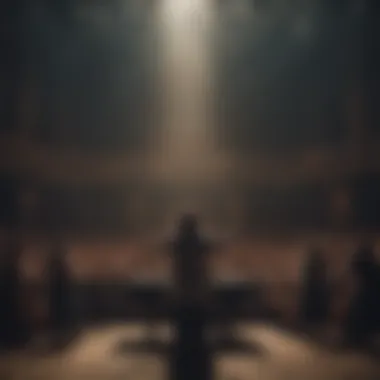
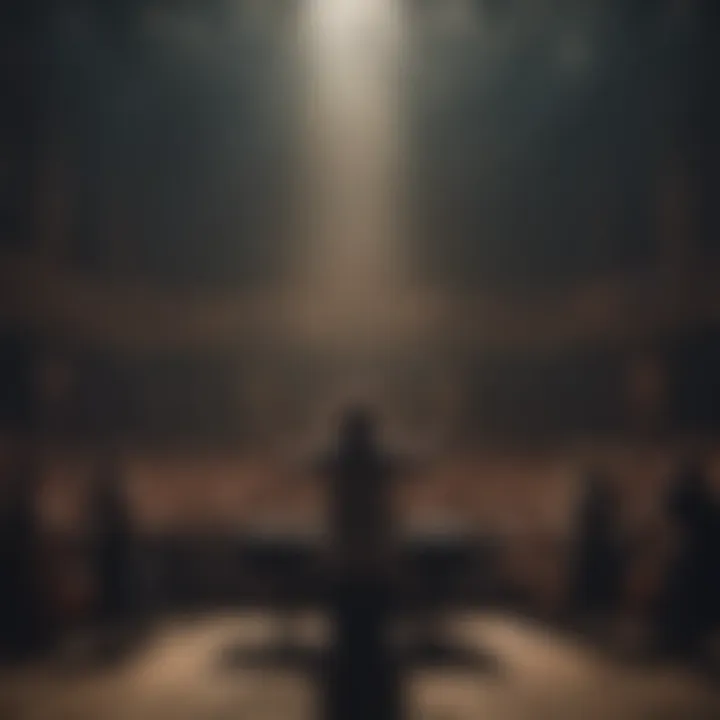
The key characteristic of hip-hop is its rhythm and accessibility, connecting artist and audience through relatable storytelling. Lyrics can evoke the haunting presence of an incubus, representing temptations and struggles for control. A strong advantage of this genre is its flexibility in sound and style, allowing artists to convey a wide array of emotions associated with the incubus concept. However, sometimes it might not carry the same mythological weight as metal or rock, focusing instead on contemporary issues, which can shift the narrative away from the traditional lore.
Case Studies of Iconic Songs
Expounding on specific case studies will reveal how different artists interpret the incubus theme, weaving their unique styles into the narrative structure. Songs across these genres not only echo the lore but also propel it into modern contexts, bridging ancient myths with present-day struggles.
Visual Arts in Music Videos
Music videos serve as a powerful medium to visually represent these themes associated with the incubus. The imagery in these videos can further amplify the emotions and messages conveyed through the music, blending sound and sight into a compelling narrative experience.
"The melding of visual elements with music creates a rich tapestry where the incubus can dance between worlds, both mystical and palpable, exploring fear and desire like never before."
In summary, examining the various musical representations of the incubus gives a broader understanding of how ancient myths find their place in contemporary culture, urging artists and listeners alike to confront their fears and desires head-on.
Notable Artists Influenced by Incubus
When diving into the narratives carved by the incubus myth, it's impossible to overlook the tangible impact it has had on a variety of artists across multiple genres. These creators have explored the incubus theme not just as a folklore figure, but as a metaphor for deeper emotional and psychological experiences. Understanding how these artists interpret the incubus notion is paramount for anyone keen on grasping the nuanced relationship between music and cultural mythology.
Artists and Their Interpretations
The sea of interpretations spanning from classic rock to avant-garde has seen some remarkable instances. Each artist often infuses their unique perspective while tapping into the incubus narrative, creating a rich tapestry of sound and lyric. For instance, the band The Doors often evoked the spirit of the incubus in their haunting compositions. Their song "The End" is a prime example, with haunting lyrics that suggest the nightmarish Salvador Dali landscape often associated with incubus lore. Similarly, Tool embraces the darkness of the myth in tracks like "Sober" where the incubus serves as a representation of inner demons.
In the realm of hip-hop, artists like Kendrick Lamar and Lil Wayne have also veered into this territory, incorporating themes of temptation and desire in their lyrics. They're not merely regurgitating myth; they are reinterpreting it in a manner that resonates with modern struggles and introspections. Lamar’s critically acclaimed piece, "Fear", brings forth feelings of dread and yearning—akin to the nocturnal visitations of an incubus.
Lyrical Analysis of Selected Tracks
Now, let's peel back the layers on some iconic tracks. Consider Evanescence's "Bring Me to Life"—the lyrics weave a tapestry of waking from a shadowy place, effectively using the incubus metaphor for awakening from emotional numbness. The line "Wake me up inside" evokes an urgency that mirrors the waking experience from a dream dominated by fearful visitations. It speaks to the universal desire to confront and vanquish one's inner struggles, highlighted by the incubus's role as an oppressive spirit.
Another formidable example is found in Metallica’s "Enter Sandman", a track that encapsulates childhood fears amplified by an incubus-like figure. The imagery conjured in the lyrics depicts night terrors, symbolizing how personal fears can creep into our consciousness in the form of this midnight spirit. This direct approach to fear and the nocturnal parallels the cultural motifs surrounding the incubus myth.
"Without the depth of such themes, music wouldn’t be as relatable or profound."
This line captures the essence of how these artists infuse their work with meanings drawn from the incubus lore, lending their music a deeper layer of emotional resonance.
Psychological Implications of the Incubus Myth
The incubus, rooted in centuries of folklore, stirs complex psychological responses that invite analysis within the realms of music and culture. This section delves into its significance, addressing how the notion of the incubus intertwines with deep-seated fears and desires, reflecting both personal and collective experiences. Through examining these psychological implications, musicians and music enthusiasts can uncover layers of meaning within the narrative of the incubus, enhancing their understanding and appreciation of its artistic representations.
Dreams and Nightmares
The incubus is often depicted as a harbinger of disturbed dreams or nightmares. It frequently symbolizes the anxieties that plague the psyche during sleep. The feeling of being weighed down, or even suffocated, while dreaming might resonate with many individuals. This portrayal is indicative of a struggle between vulnerability and vulnerability, wherein the incubus can represent both a seductive allure and a terrifying dread. Many artists pull from this duality to inform their work, effectively transforming personal fears into relatable lyrical content.
Common Elements in Artistic Representations
- Imagery of Confinement: Artists may use metaphors that depict being trapped or overwhelmed, mirroring the sensation of enduring an incubus visitation.
- Transformation of Emotion: The muscular tensions and deep emotions that manifest during these nightmares can become a source of creative expression in songwriting.
- Cultural Relevance: Cultural narratives around the incubus are often interwoven with personal stories, creating a rich tapestry for artists to draw inspiration.
This thematic exploration enables listeners to connect more profoundly with the music—engaging them in a cerebral dance between dreaming and waking life. The skilled songwriting found in genres such as rock and metal often leans heavily on these motifs, effectively channeling the notion of the incubus into a vivid auditory experience.
Fear and Desire in Music
The concepts of fear and desire are intrinsically linked when we consider the incubus myth. The incubus embodies the very essence of these opposing forces. On one side lies the allure of passion, while the other shadows it with fear—fear of the unknown, fear of loss of control, and even fear of intimacy. Musical compositions that touch upon these themes tend to strike a chord with audiences, exploring how desire can nest in the same space as dread.
Examples of This Duality in Lyrics
- Lust and Regret: Many songs probe the turmoil of desiring someone while grappling with the implications that attachment brings.
- Cathartic Release: Artists utilize the incubus narrative as a mechanism for processing complex feelings, turning experiences of fear and longing into enthralling sonic journeys.
- Emotional Resonance: Instruments often amplify the vacillation of these sentiments, using tempo changes or shifts in dynamics to echo the push and pull of these feelings.
The Evolution of the Incubus Concept
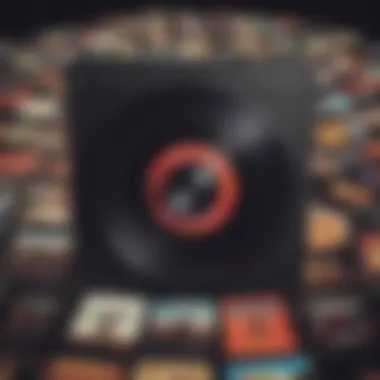

The idea of the incubus has morphed through centuries, blending lore with the realities of emotion and creativity. The evolution of this concept is not just a historical recount; it is a lens through which we can examine how music and culture react to the persistent themes of desire, fear, and personal struggle. The incubus serves as a metaphor for deeper psychological issues, exploring the battles within ourselves and the shadows of our desires.
As we traverse through modern interpretations, we find that the incubus is circling back into popular consciousness in ways that resonate with contemporary issues. Whether seen as a figure of haunting seduction or a symbol of anxiety and repression, the incubus encapsulates a rich complexity that has made it a worthy subject in both artistic and cultural dialogues.
Modern Adaptations
Today’s music is a reflection of varied adaptations of the incubus motif. There are numerous artists who integrate elements of the incubus narrative into their work while presenting fresh and sometimes unconventional takes. For instance, in pop music, the struggles with temptation and longing are often explored through lyrics that evoke imagery reminiscent of myths. For example, Halsey’s song "Ghost" explores an emotional haunting that can be likened to the sensations attributed to an incubus encounter, where desire and unfulfilled expectations create a poignant emotional landscape.
Moreover, the incubus concept has seeped into genres like electronic music, where the very sensations associated with nighttime escapism can lead to a feeling of being possessed or overwhelmed. Caleb Murray's track "Night Walker" is an excellent case in point. It layers sonorous beats that promote a sense of alluring danger—a contemporary nod to incubus folklore.
Influence on New Genres
The influence of the incubus concept is far-reaching, particularly in the emergence of new music genres. In alternative and indie rock, for example, the figures of unfulfilled longing and desire often echo themes reminiscent of incubus tales. The band KFlay, with their 2017 track "Blood in the Cut," alludes to feelings of torment and desire that are highly evocative of demonic seduction, creating a bridge between mythological themes and the tumultuous landscape of modern relationships.
Additionally, when examining hip-hop, the incubus metaphor often serves to amplify themes surrounding power, dominance, and vulnerability. Artists like Lil Uzi Vert on tracks like "XO TOUR Llif3" exemplify this idea through the struggles with mental health and the iterated cycle of desire and despair, skillfully aligning ancient myth with a modern narrative.
"The incubus acts, both in myth and modern art, not just as a antagonist of the night, but as a mirror reflecting our deepest fears and desires."
In summary, the evolution of the incubus concept reflects an ongoing discourse between past myth and present reality. It enables contemporary artists to explore their personal challenges and societal issues through the lens of an ancient narrative, breathing new life into a figure that has haunted human imagination through the ages.
Cultural Critique and Perspectives
The discussion surrounding the incubus concept in music and culture invites a layered exploration of how societal views shape artistic expression. Understanding the perspectives aligned with this figure sheds light on contemporary artistic practices and challenges preconceived notions rooted in historical contexts. The incubus, often interpreted as a harbinger of desire or fear, symbolizes much more than a mere mythological entity. It encapsulates various aspects of human emotional experience and has vast ramifications within today's cultural landscape.
Feminist Interpretations
Feminist critiques surrounding the incubus primarily focus on power dynamics and gender roles embedded within the narratives. Traditionally portrayed as male entities that prey upon women, the incubus figures challenge, critique, and reinforce stereotypes of masculinity and femininity. This examination is vital for several reasons:
- Power Dynamics: The incubus is often described as an overpowering figure who imposes his will upon the victim, leading to discussions about agency, consent, and desire. This dynamic reflects larger societal structures that govern gender relations.
- Woman as Victim vs. Woman as Agent: While many narratives depict women as victims, feminist interpretations often reclaim the narrative, finding strength within the role of the victim. Some argue that the incubus can serve as a metaphor for societal pressures and expectations placed upon women.
- Subversion: Artists and writers use the incubus motif to subvert traditional narratives. By flipping the script, they challenge the notion that desire must equate to victimization. This transformation is echoed in modern music and literature where women redefine their relationships and desires.
For instance, songs from artists like Fiona Apple encapsulate this shift. In tracks such as "Criminal," she intricately explores the themes of shame and desire, portraying a more complex relationship with the idea of predation. Therefore, the feminist interpretations of the incubus not only resonate with historical roots but also propel forward conversations about empowerment and self-definition.
Incubus in Contemporary Literature
The portrayal of the incubus in contemporary literature expands the boundaries of traditional mythological interpretations. Modern writers reimagine this figure to critique social norms, address personal struggles, and express a deeper understanding of human emotions. Some key elements include:
- Redefinition of Roles: In contemporary literature, the incubus can sometimes embody vulnerability. As authors redefine their characters, they create a spectrum of humanity where even the traditional predator exhibits emotions and flaws.
- Psychological Depth: The exploration of the incubus extends into psychological themes, paralleling societal anxieties and existential fears. Modern narratives might reflect on personal mental struggles, mirroring the internalized chaos that people confront daily.
- Identity Exploration: Through a critical lens, some contemporary works delve into themes of identity and belonging, questioning societal labels while unfolding the incubus as a metaphor for internal conflicts.
In works by authors like Neil Gaiman or Angela Carter, the traditional figure transforms, becoming a reflection of societal nuances and individual psyche, which ultimately shapes how readers interpret the world around them.
"The incubus not only haunts dreams but also amplifies reality, challenging us to confront our desires in a world steeped in myths and narratives."
End: The Legacy of Incubus in Music
The concept of the incubus has woven itself into the fabric of music across various genres, symbolizing a potent amalgamation of desire, fear, and the unknown. This article illustrates not only how the incubus serves as a metaphor but also highlights its profound significance in shaping artistic expression. We’ve journeyed through its roots, examined its manifestations in folklore, and dissected its embodiment within musical creations. The legacy of the incubus is not just a remnant of dark fairy tales; instead, it thrives in contemporary narratives, resonating with artists and audiences alike.
Reflections on Influence
The influence of the incubus concept on music can be seen across numerous artists and songs. Creators draw upon the rich imagery and emotional tension inherent in the incubus myth. This myth embodies a primal struggle between desire and fear, making it ripe for exploration in lyrical content. Take for instance the rock ballads that often flirt with themes of unrequited love, obsession, and temptation. When we listen to tracks like "Creep" by Radiohead or "Bring Me to Life" by Evanescence, the themes echo the incubus's defining characteristics. They reveal the emotions that stir when one feels both seduced and haunted by unfulfilled desires.
Moreover, the incubus influences not only songwriters but also musicians in their live performances. The dramatic presentation often mirrors the duality of the incubus figure, allowing artists to create a visceral connection with their fans. Through haunting visuals and gripping narratives, musicians carry their audiences on a roller-coaster of emotions, making the myth feel ever-relevant.
"Music is the shorthand of emotion." - Leo Tolstoy. This sentiment rings true when considering the incubus narrative in song, as its various interpretations allow for a variety of emotional experiences.
Future Directions
Looking ahead, the exploration of the incubus in music is far from conclusion. Contemporary society is ever-evolving, and the incubus can still serve as a conduit for addressing modern themes. As issues like mental health, consent, and personal agency gain attention in art, the incubus metaphor may shift to reflect these new concerns. For instance, we might see artists integrating this figure to confront the nuances of contemporary relationships and the complexities of intimacy in a digital age.
Furthermore, the rise of genres like alternative electronic music and indie pop presents new opportunities to reinterpret old themes. Musicians can leverage modern production techniques to create immersive soundscapes that echo the chaos of desire and the surreal experiences often attributed to the incubus. It's crucial that the future of this narrative does not shy away from confronting darker themes, allowing for honesty and vulnerability in artistic expression.
Ultimately, as long as people grapple with the dualities of fear and desire, the incubus will continue to haunt and inspire musicians, revealing not only the shadows within human emotion but also enlightening journeys through artistic interpretation.







